Dragonlance is a shared universe created by Laura and Tracy Hickman, and expanded by Tracy Hickman and Margaret Weis under the direction of TSR, Inc. into a series of fantasy novels. The Hickmans conceived Dragonlance while driving in their car on the way to TSR for a job interview. Tracy Hickman met his future writing partner Margaret Weis at TSR, and they gathered a group of associates to play the Dungeons & Dragons role-playing game. The adventures during that game inspired a series of gaming modules, a series of novels, licensed products such as board games, and lead miniature figures.
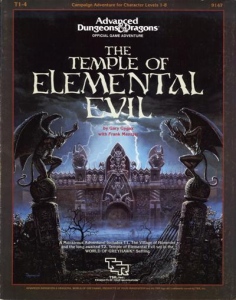
The Temple of Elemental Evil is an adventure module for the fantasy role-playing game Dungeons & Dragons, set in the game's World of Greyhawk campaign setting. The module was published by TSR, Inc. in 1985 for the first edition Advanced Dungeons & Dragons rules. It was written by Gary Gygax and Frank Mentzer, and is an expansion of an earlier Gygax module, The Village of Hommlet. The Temple of Elemental Evil is also the title of a related 2001 Thomas M. Reid novel and an Atari computer game.
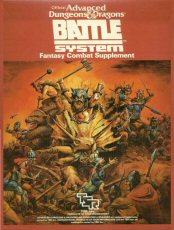
Battlesystem is a tabletop miniature wargame designed as a supplement for use with the Dungeons & Dragons role-playing game. The original Battlesystem was printed as a boxed set in 1985 for use with the first edition AD&D rules. For the second edition of AD&D, a new version of Battesystem was printed as a softcover book in 1989.

H1 Bloodstone Pass is an adventure module for the first edition of the Advanced Dungeons & Dragons (D&D) fantasy role-playing game. It was written by Douglas Niles and Michael Dobson and published by TSR, Inc., in 1985. While it contained some traditional D&D elements, the main portion of the module was a series of mass battles using the D&D Battlesystem.
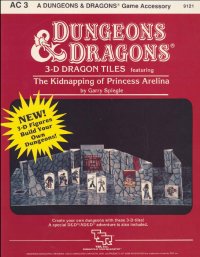
The Kidnapping of Princess Arelina is a fourteen-page accessory designed for the Dungeons & Dragons fantasy role-playing game.

H3 - The Bloodstone Wars is an Official Game Adventure or "module" for Advanced Dungeons & Dragons.

Jeff Easley is an oil painter who creates fantasy artwork for role-playing games, comics, and magazines, as well as non-fantasy commercial art.
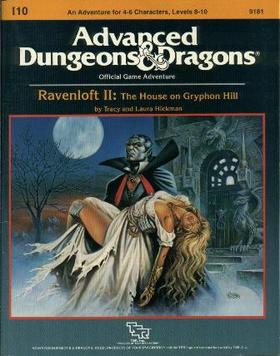
Ravenloft II: The House on Gryphon Hill is a Dungeons & Dragons module written for use with the First Edition Advanced Dungeons & Dragons ruleset, by TSR.
The DL series is a series of adventures and some supplementary material for the Advanced Dungeons & Dragons role playing game. These modules along with the Dragonlance Chronicles trilogy of novels, which follow one possible adventure series through the modules, were the first published items that established the Dragonlance fictional universe. The original DL series was released from 1984 to 1986, with the final two modules added to it in 1988. In the 1990s these roleplaying adventures from the original series were collected and revised for 2nd Edition AD&D as the three DLC Dragonlance Classics modules. There were also versions of the module series released in 1999, 2000 and 2006.

Dragons of Despair is the first in a series of 16 Dragonlance adventures published by TSR, Inc. (TSR) between 1984 and 1988. It is the start of the first major story arc in the Dragonlance series of Dungeons & Dragons (D&D) role-playing game modules, a series of ready-to-play adventures for use by Dungeon Masters in the game. This series provides a game version of the original Dragonlance storyline later told in the Dragonlance Chronicles trilogy of novels. This module corresponds to the events told in the first half of the novel Dragons of Autumn Twilight by Margaret Weis and Tracy Hickman. Its module code is DL1, which is used to designate it as the first part of the Dragonlance adventure series.
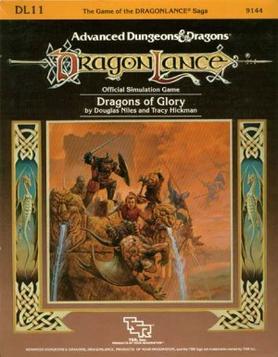
Dragons of Glory is a Dungeons & Dragons source book in a series of modules from the Dragonlance campaign setting. It is one of the 16 DL modules published by TSR between 1984 and 1986.
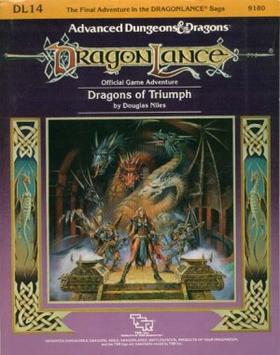
Dragons of Triumph is the fourth and final module in the third story arc of the 14-module Dragonlance (DL) series of the Dungeons & Dragons adventure role-playing game. The series was published by TSR between 1984 and 1986. The game's cover art work by Clyde Caldwell features Laurana Kanan chained on a platform before the goddess of evil, Takhisis.

Night's Dark Terror is an adventure module for the Dungeons & Dragons (D&D) fantasy role-playing game written by British game designers Jim Bambra, Graeme Morris, and Phil Gallagher. It was designed specifically for campaigns transitioning from the D&D Basic Set to the D&D Expert Set. The player characters (PCs) journey from a farmstead into uncharted wilderness, where they encounter new hazards and contend with a secret society. The adventure received a positive review from White Dwarf magazine.
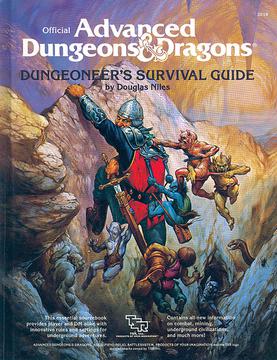
Dungeoneer's Survival Guide is a supplement to the Dungeons & Dragons fantasy role-playing game. The book was written by Douglas Niles, and published by TSR, Inc. in 1986.

The Dungeons & Dragons Basic Set is a set of rulebooks for the Dungeons & Dragons (D&D) fantasy role-playing game. First published in 1977, it saw a handful of revisions and reprintings. The first edition was written by J. Eric Holmes based on Gary Gygax and Dave Arneson's original work. Later editions were edited by Tom Moldvay, Frank Mentzer, Troy Denning, and Doug Stewart.

Red Arrow, Black Shield is an adventure module for the Dungeons & Dragons fantasy role-playing game. It was published by TSR in 1985, and designed by Michael S. Dobson. Its cover art is by Jeff Easley, and cartography by Dennis Kauth. The module's associated code is X10 and its TSR product code is TSR 9160. This module was developed and intended for use with the Dungeons & DragonsExpert Set and Companion Set rules.
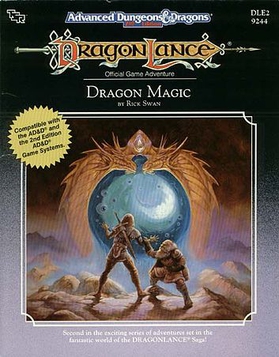
Dragon Magic is an adventure module published by TSR in 1989 for the Dungeons & Dragons fantasy role-playing game, specifically the Dragonlance campaign setting.

Time of the Dragon is an accessory for the Dragonlance campaign setting of the Advanced Dungeons & Dragons fantasy role-playing game.
















